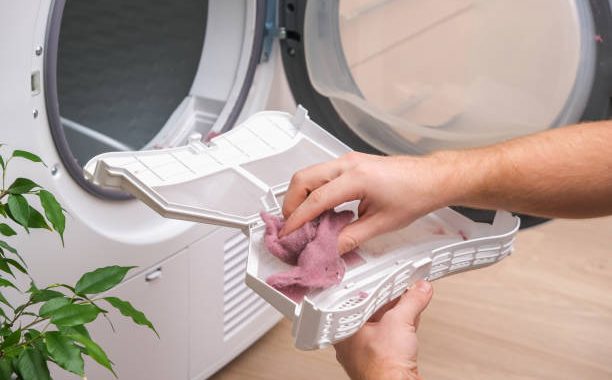When it comes to drying laundry, there are two primary methods to choose from: machine drying and air drying. Each method has its merits, and the decision between the two depends on factors such as convenience, environmental impact, and the desired outcome for your clothes. In this article, we will explore the differences between machine drying and air drying, focusing on the quality and efficiency of both methods to help you make an informed decision that best suits your needs.
Machine Drying: Convenience and Speed
Machine drying, also known as tumble drying, is a popular method in modern households. It involves placing damp laundry into a dryer machine, which then uses heated air to remove moisture from the clothes. Machine drying offers several advantages, primarily centered around convenience and speed.
Quick Drying: Machine drying is remarkably fast, especially when compared to air drying. Most modern dryers are designed to dry clothes within an hour or less, saving valuable time and ensuring that laundry can be done efficiently.
All-Weather Solution: Unlike air drying, which heavily relies on weather conditions, machine drying provides a consistent and reliable drying solution regardless of the outside weather. This is particularly beneficial in regions with unpredictable or rainy climates.
Softness and Fluffiness: Tumble dryers often incorporate features like fabric softeners and steam cycles that help maintain the softness and fluffiness of clothes. This can be especially appealing for items like towels and bed linens.
Wrinkle Reduction: Many dryers offer wrinkle-reduction settings that help minimize creases in clothes during the drying process. This feature is especially handy for busy individuals who want their clothes to be ready to wear straight out of the dryer.
Air Drying: Environmental Impact and Garment Care
Air drying, as the name suggests, involves allowing clothes to dry naturally by hanging them on a clothesline or laying them flat on a drying rack. This traditional method has been used for centuries and offers its own set of advantages, especially concerning environmental impact and garment care.
Energy Efficiency: Air drying is one of the most energy-efficient ways to dry clothes. By harnessing the natural power of the wind and sun, it consumes zero electricity, helping reduce household energy consumption and lower utility bills.
Environmental Friendliness: Opting for air drying is a sustainable choice that reduces carbon emissions associated with machine drying. By cutting down on energy use, you are contributing to environmental preservation and reducing your carbon footprint.
Extended Garment Lifespan: Air drying is gentler on clothes compared to the high heat and tumbling action of machine drying. It helps extend the lifespan of garments by preventing excessive wear and tear caused by machine drying.
Preservation of Fabric Quality: Delicate fabrics, such as silk and cashmere, are best preserved through air drying to avoid damage caused by heat exposure.
No Shrinkage: Air drying eliminates the risk of shrinkage, which can occur when certain fabrics are exposed to high temperatures in a tumble dryer.
Natural Freshness: Air-dried clothes often have a natural freshness and scent, enhanced by exposure to fresh air and sunlight.
Factors to Consider When Choosing Between Machine Drying and Air Drying
Fabric Types: Consider the fabric types of your clothes. Delicate and sensitive fabrics may benefit from air drying, while sturdier fabrics can handle machine drying.
Time Constraints: Evaluate your time constraints and laundry routine. Machine drying is significantly faster, making it a practical choice for those with busy schedules.
Climate and Weather: Consider your climate and weather conditions. Air drying may not be feasible in regions with high humidity or frequent rain.
Energy Consumption: Reflect on your commitment to energy conservation. If you prioritize reducing energy consumption, air drying may be the preferable choice.
Space Availability: Consider the space available for drying clothes. Air drying requires adequate outdoor or indoor space for clotheslines or drying racks.
Clothing Care Preferences: Think about your clothing care preferences. If you value softness, fluffiness, and wrinkle-free clothes, machine drying may better suit your needs.
In conclusion, both machine drying and air drying have their unique advantages and considerations. Machine drying is fast and convenient, making it suitable for time-sensitive households, while air drying offers energy efficiency, environmental friendliness, and fabric care benefits. The decision between the two methods ultimately comes down to personal preferences, lifestyle, and environmental consciousness. Some individuals may opt for a combination of both methods, using machine drying for time-sensitive loads and air drying for delicate fabrics or to reduce their environmental impact. Whichever method you choose, it’s essential to consider the quality and efficiency aspects to ensure that your clothes are well-cared for and that your laundry routine aligns with your lifestyle and values.
Don’t let appliance malfunctions disrupt your daily routine. Trust Chula Vista Appliance Repair Company to get your appliances back up and running smoothly. Visit our website today to find out more about our exceptional services and how we can assist you. Experience the difference with Chula Vista Appliance Repair Company – your go-to expert for reliable appliance repairs.
Contact us
(619) 880-5508


